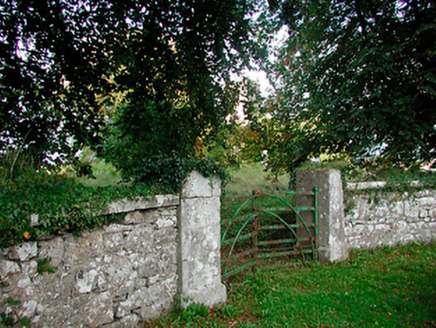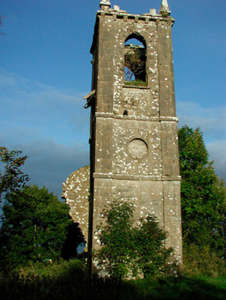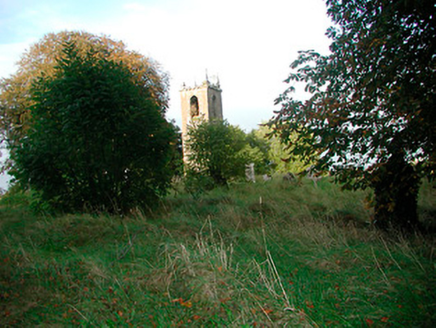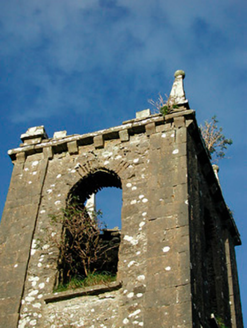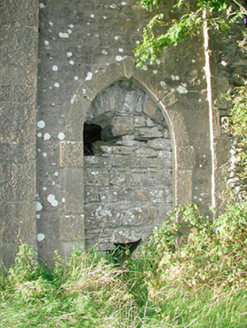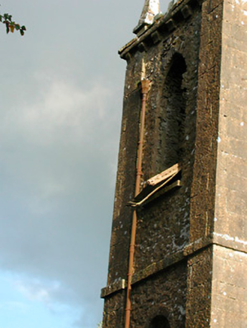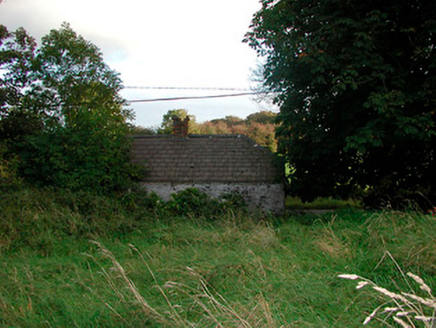Survey Data
Reg No
15402511
Rating
Regional
Categories of Special Interest
Architectural, Artistic, Social
Original Use
Church/chapel
Date
1805 - 1815
Coordinates
233993, 249764
Date Recorded
30/09/2004
Date Updated
--/--/--
Description
Freestanding three-stage former Church of Ireland bell tower/belfry on square-plan, built c.1811, having corner pinnacles with ball finials over and the remains of a corbelled parapet with Irish-style battlements over. Church now out of use with main hall/nave of church demolished. Constructed using rubble limestone with extensive ashlar trim, including pilasters to the corners, a projecting string course between each stage and dressings to the openings. Cast-iron rainwater hopper and down pipe to north face of tower. Pointed-arched openings to former belfry and a pointed-arched doorcase to the south elevation with ashlar block-and-start surround, now blocked. Recessed roundels to second stage with ashlar surrounds. Surviving masonry from the nave, projecting from second stage, to the northeast. Set back from road to the north of the main Mullingar to Athlone road. Surrounded by a graveyard with an extensive collection of nineteenth century cut stone grave markers. Bounded by a random rubble boundary wall to the south. Main entrance to the south, comprising a pair of dressed limestone gate piers, on square-plan, supporting wrought-iron double gates. Former single-storey sexton's house to the southwest, with hipped natural slate roof, roughcast rendered walls and square-headed openings.
Appraisal
The appealing and picturesque remains of the tower of a former Church of Ireland church, now largely demolished. The form of this tower suggests that this church conformed to the standard 'hall and tower' church, which were built in great numbers, particularly between 1808-1830, using loans and grants from the Board of First Fruits (1722-1833). These small, simple, but well-built churches have become almost iconographic features of the rural Irish countryside. Lewis (1837) records that this church was erected in 1811, using a gift of £600 from the Board of First Fruits. The surrounding graveyard, which has a number of finely carved stone grave markers and cast-iron railings, and the well-constructed boundary wall and gates to the south adds to the setting. The remains of a single-storey former sextons house to the south is an important and rare survival that adds substantially to the importance of this complex. This church was recorded as 'in ruins' in c.1913. Forms an interesting pair of related structures with the former Rectory to the west (15402512).
